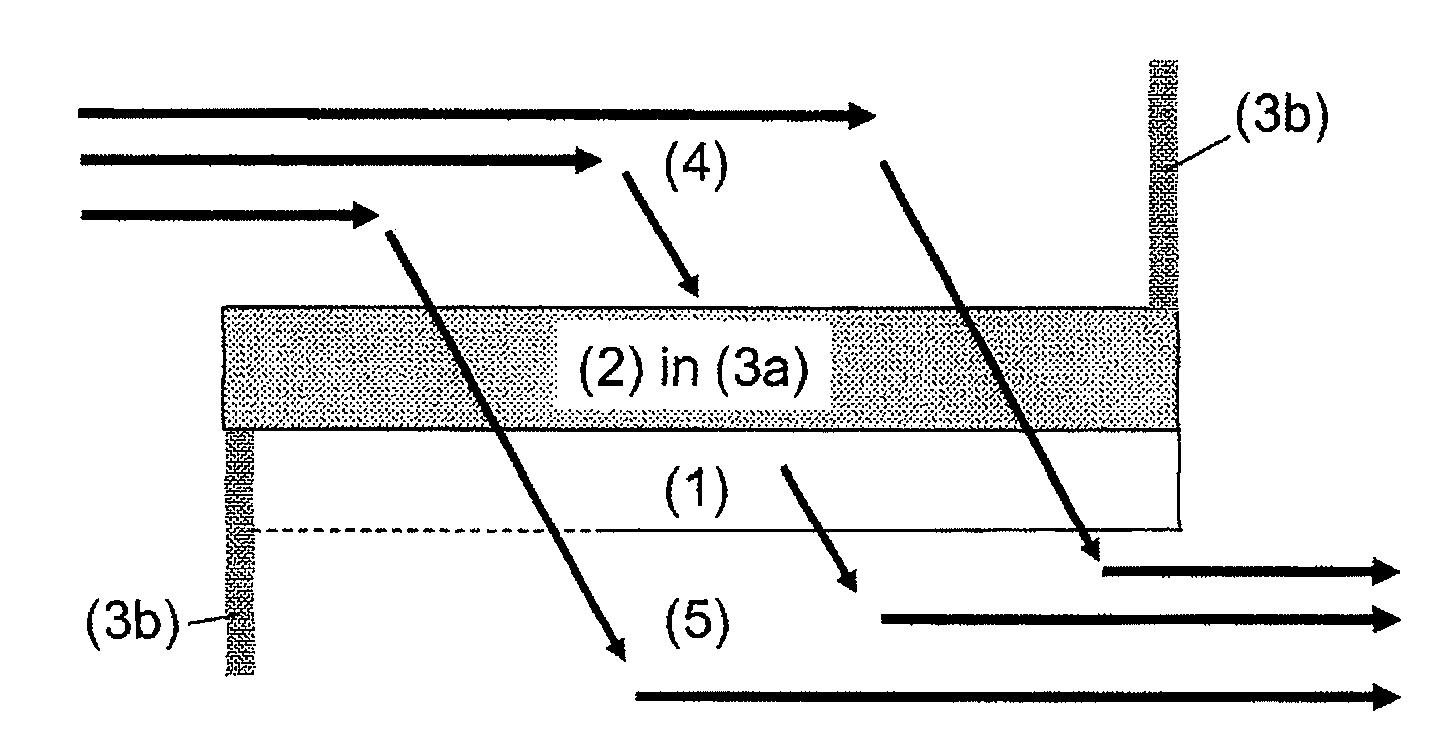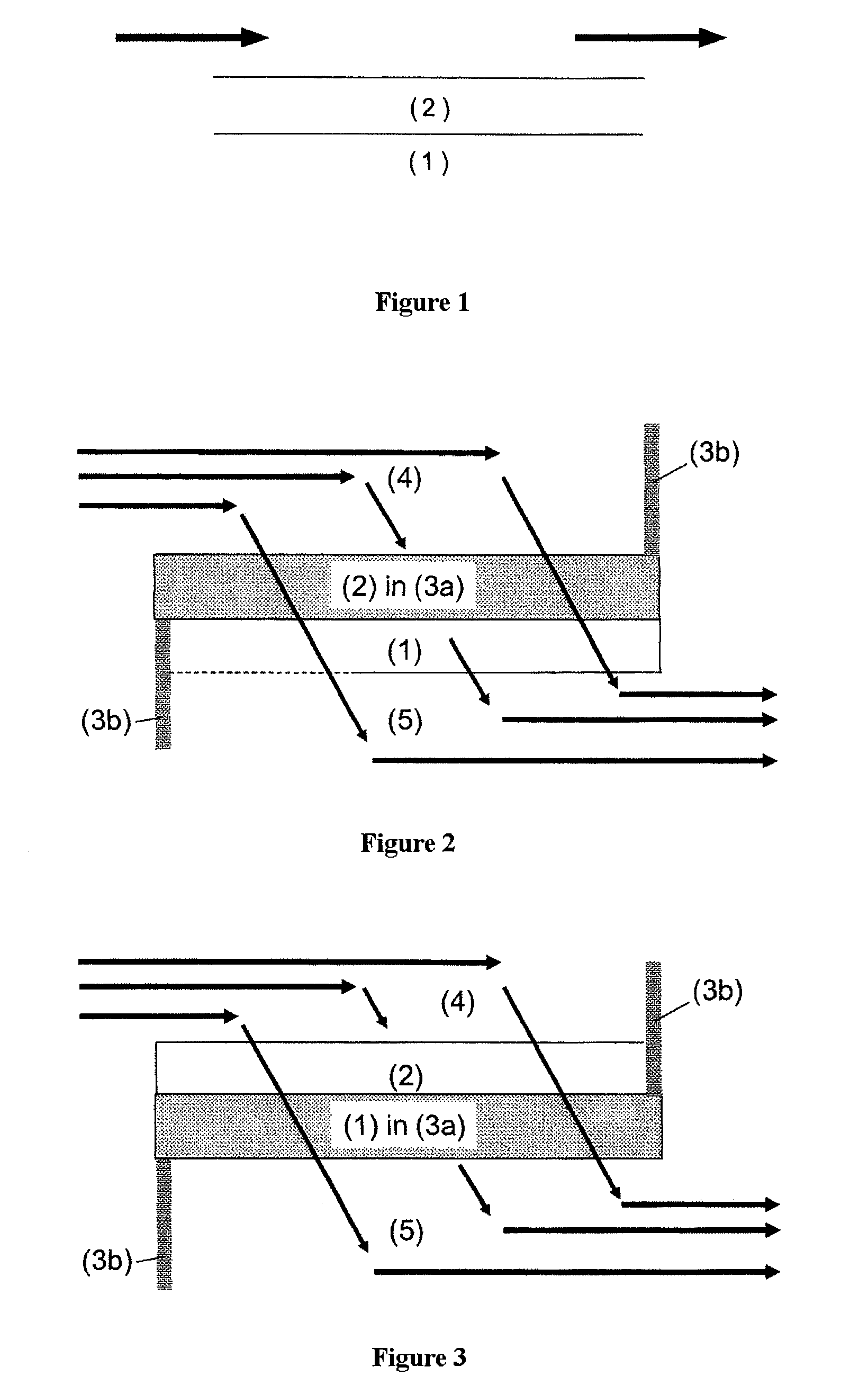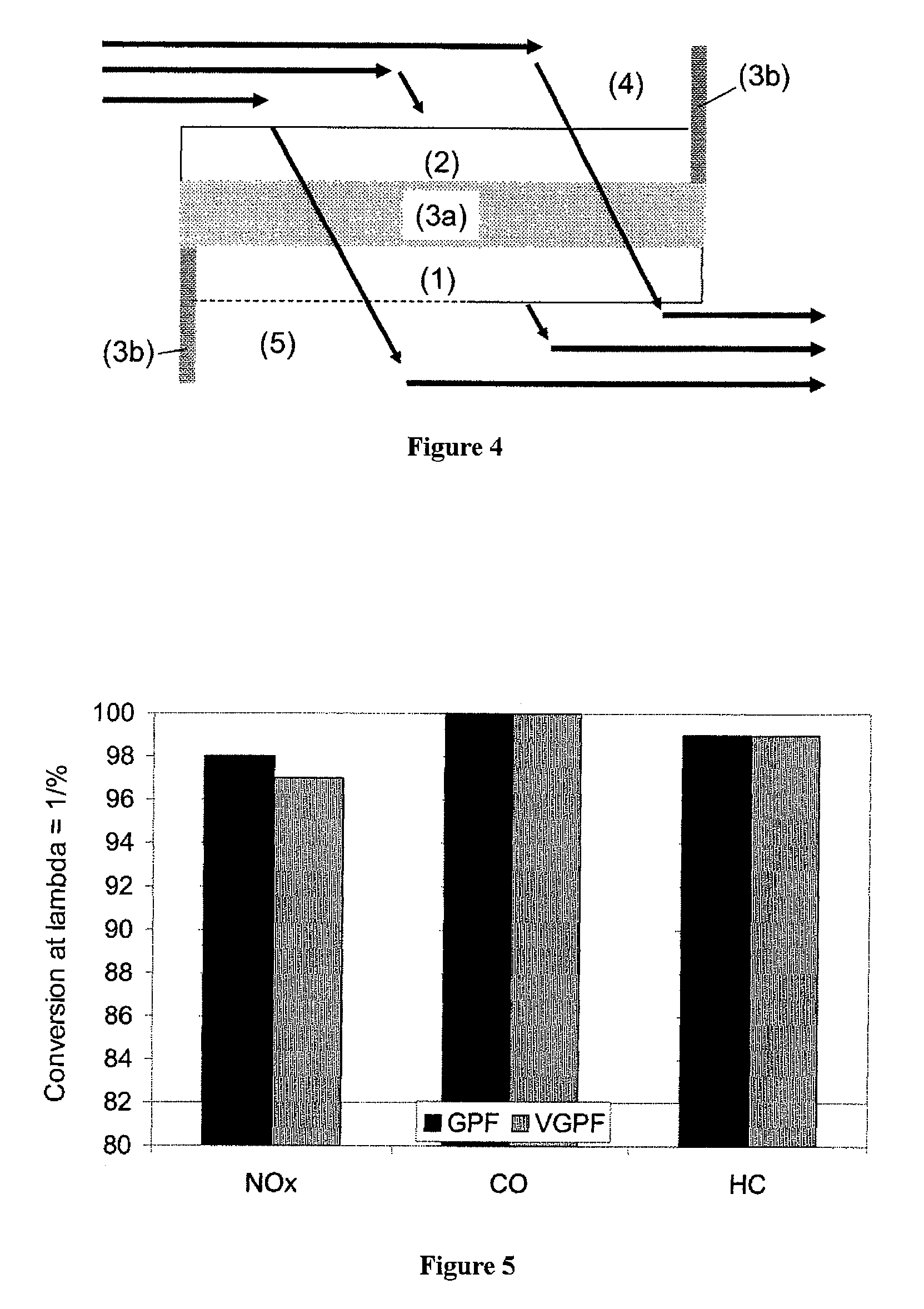Removal of particulates from the exhaust gas of internal combustion engines operated with a predominantly stoichiometric air/fuel mixture
a technology of stoichiometric air/fuel mixture and particulate filter, which is applied in the direction of combustible gas purification/modification, metal/metal-oxide/metal-hydroxide catalyst, etc., can solve the problem of not meeting the requirements of catalytically activated diesel particulate filters known in the prior art, and the application of temperatures above 400° c. in the downstream exhaust gas system is often difficult, and achieves high thermal cycling stability
- Summary
- Abstract
- Description
- Claims
- Application Information
AI Technical Summary
Benefits of technology
Problems solved by technology
Method used
Image
Examples
example
[0069]Manufacture of the First Layer:
[0070]Alumina (specific surface area 140 m2 / g) stabilized with 3% by weight of lanthanum oxide and a cerium / zirconium mixed oxide with a cerium oxide content of 40% by weight was activated according to U.S. Pat. No. 6,103,660 using barium hydroxide as a base together with palladium originating from palladium nitrate. The resulting suspension was used directly to coat the wall flow filter substrate. The suspension was applied only in the inflow channels of the filter body. After the coating, the filter was dried and calcined. The finished first layer contained the following amounts of coating:
10g / lof lanthanum-stabilized alumina10g / lof cerium / zirconium mixed oxide with 40% byweight of cerium oxide1g / lof barium oxide1.236g / lof palladium (on all components)
[0071]Manufacture of the Second Layer:
[0072]A cerium / zirconium mixed oxide with a cerium oxide content of 20% by weight was suspended in water. Thereafter, an aqueous solution of rhodium nitrate w...
PUM
| Property | Measurement | Unit |
|---|---|---|
| Temperature | aaaaa | aaaaa |
| Temperature | aaaaa | aaaaa |
| Density | aaaaa | aaaaa |
Abstract
Description
Claims
Application Information
 Login to View More
Login to View More - R&D
- Intellectual Property
- Life Sciences
- Materials
- Tech Scout
- Unparalleled Data Quality
- Higher Quality Content
- 60% Fewer Hallucinations
Browse by: Latest US Patents, China's latest patents, Technical Efficacy Thesaurus, Application Domain, Technology Topic, Popular Technical Reports.
© 2025 PatSnap. All rights reserved.Legal|Privacy policy|Modern Slavery Act Transparency Statement|Sitemap|About US| Contact US: help@patsnap.com



